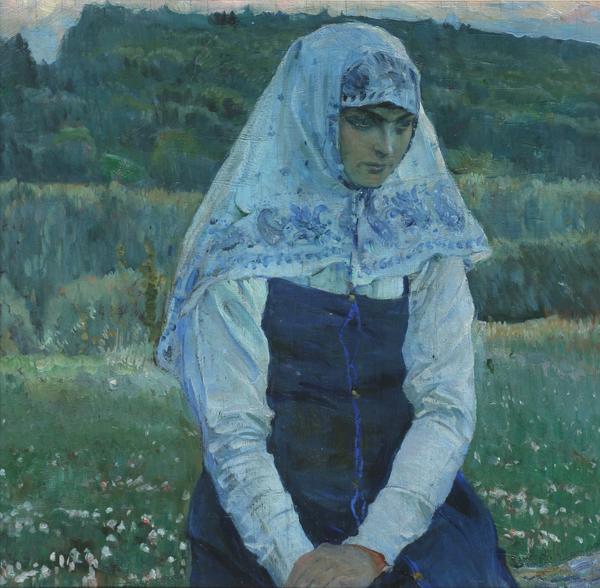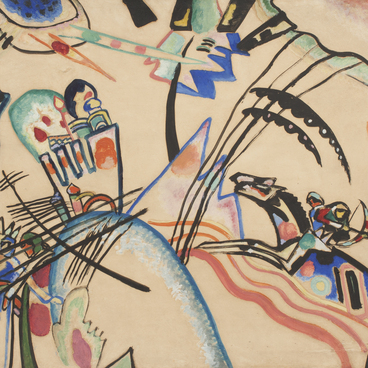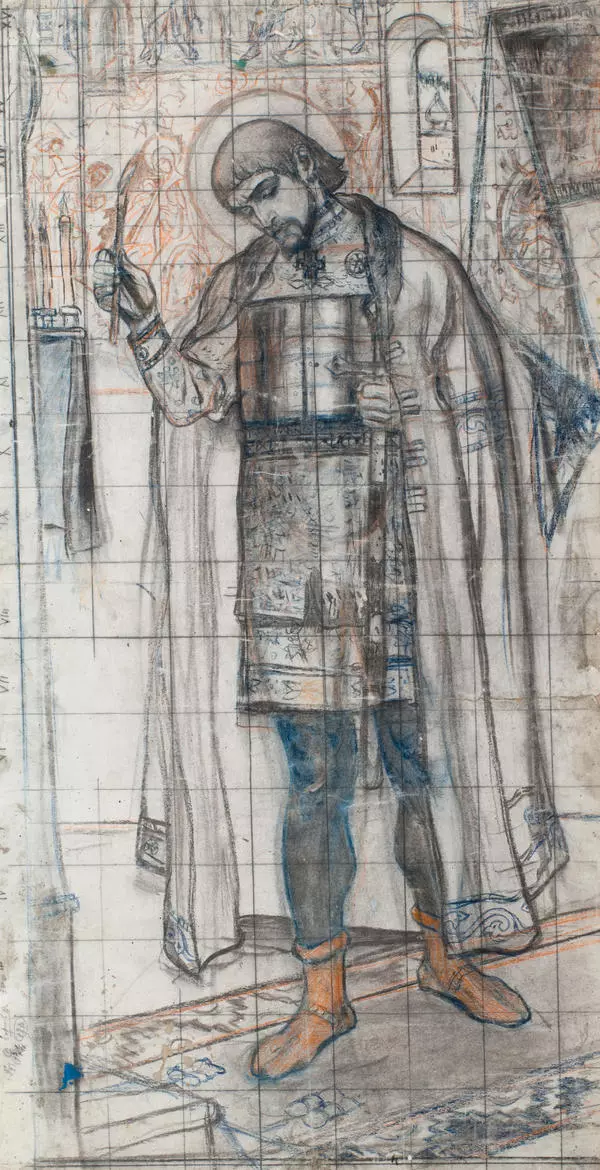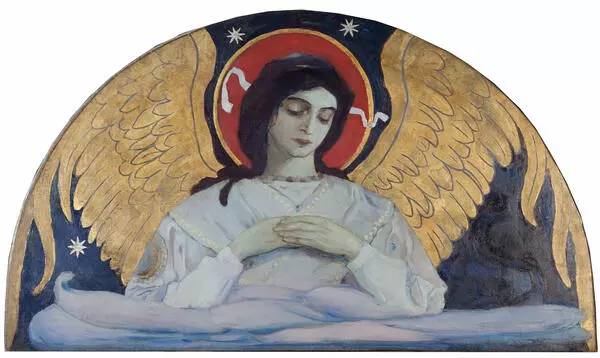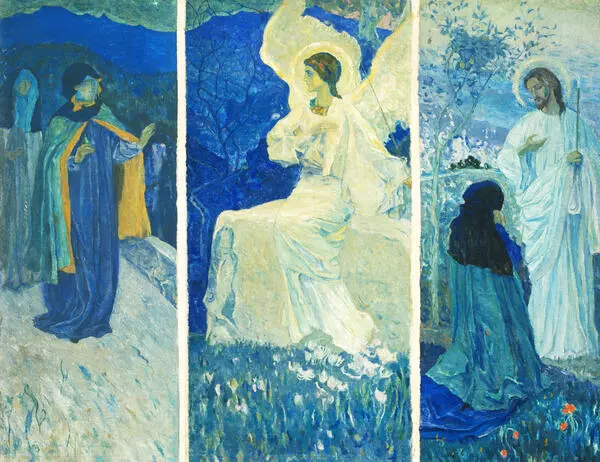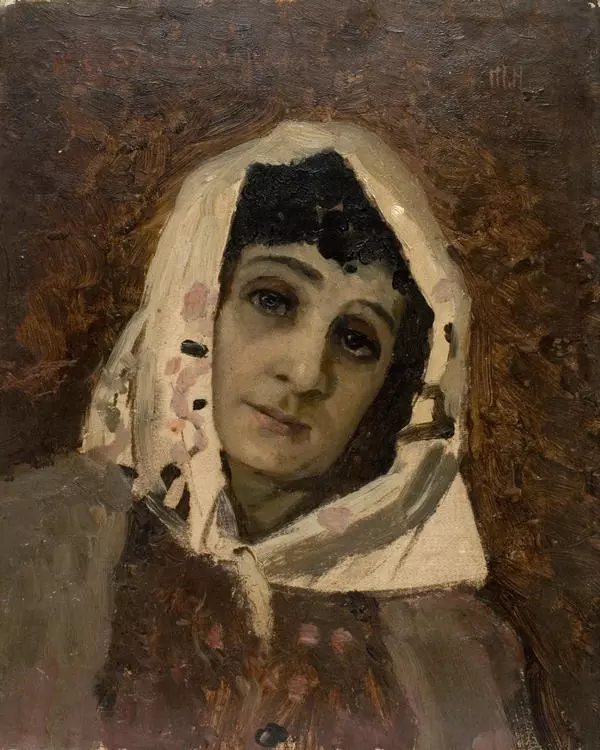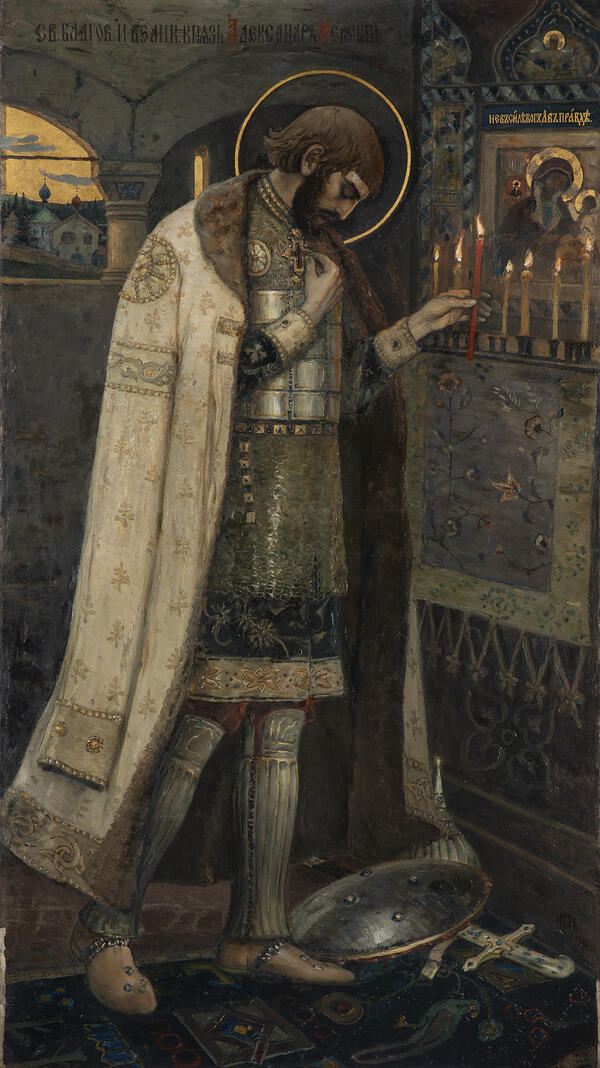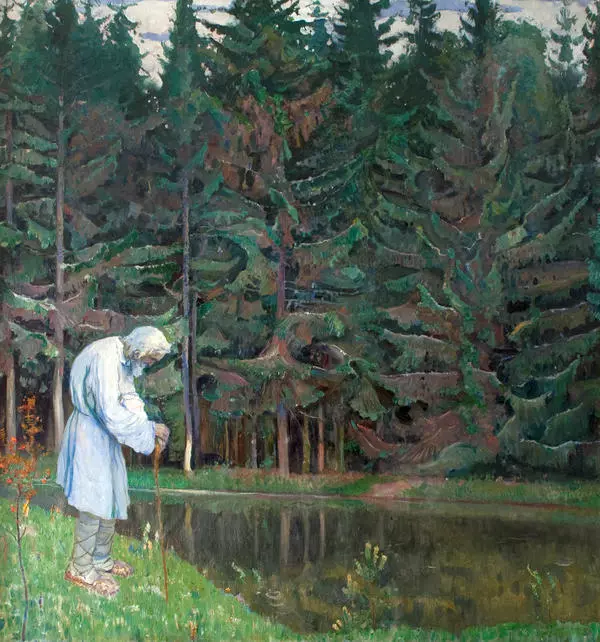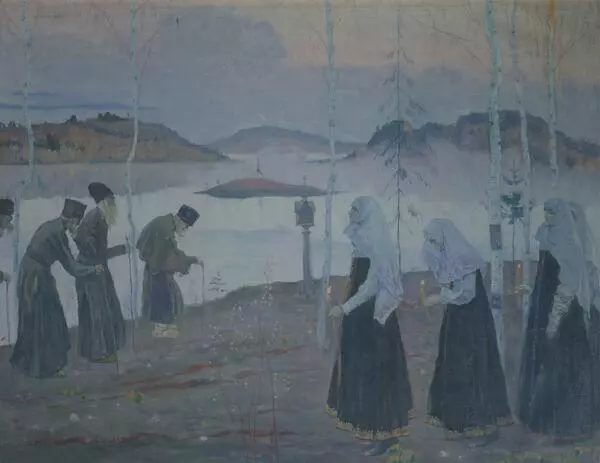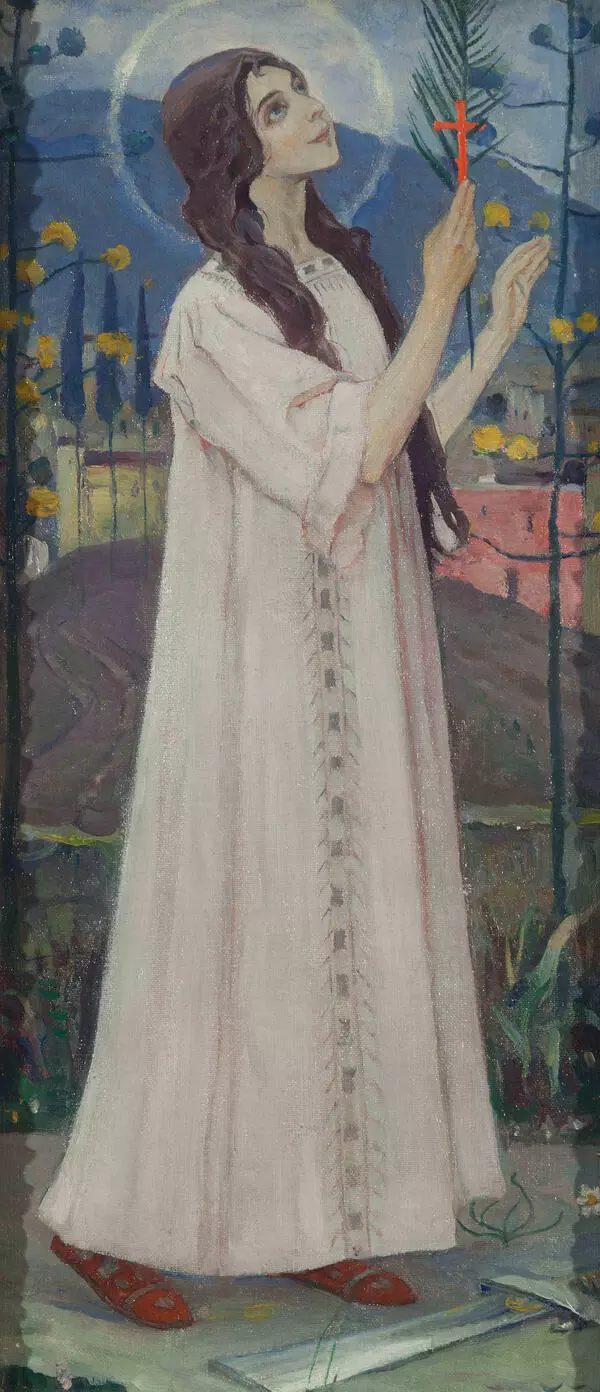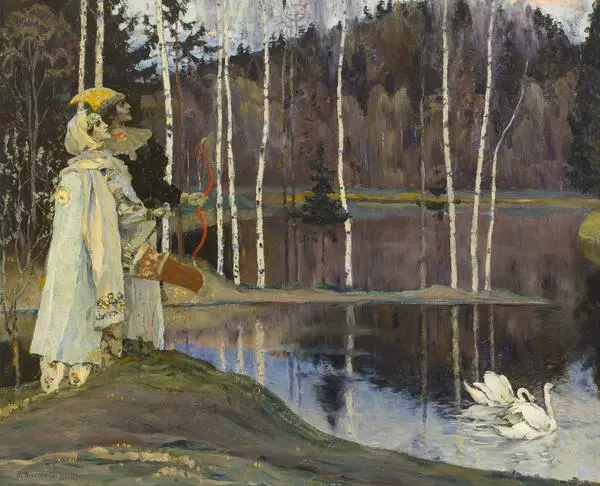Mikhail Nesterov (1862-1942) studied in the Moscow School of Painting, Sculpture, and Architecture, and then in the Saint Petersburg Academy of Arts. From 1889, his works were shown at exhibitions of the Itinerants. Nesterov’s early pieces were painted in a realistic manner. Still, poetic religious images proved to be closer to the artist. The Painter was attracted by the ascetic austerity of monasticism, aesthetics of Orthodox rituals, life in accord with the nature. Russian monasteries became the main subject of the prerevolutionary art of Mikhail Nesterov.
One of the most famous canvases of the artist Bride of Christ came to existence after the tragedy in Nesterov’s family. During childbirth, only one year after the wedding, the painter’s wife passed away. He wrote: “Her image haunted me… Everywhere, I saw he features, her smile… in the same year of 1887, it came to me that I should paint my Bride of Christ with Masha”s face”.
In his canvas Bride of Christ, the artist combined cold and warm hues, avoiding at the same time excessively intense color contracts. The canvas details — the turn of the main character’s head, her pose, facial features — were carried over by Mikhail Nesterov, with minor changes, from one painting to another. The artist believed that they expressed in the best way femininity, noble composure, detachment from the earthly world.
One of the most famous canvases of the artist Bride of Christ came to existence after the tragedy in Nesterov’s family. During childbirth, only one year after the wedding, the painter’s wife passed away. He wrote: “Her image haunted me… Everywhere, I saw he features, her smile… in the same year of 1887, it came to me that I should paint my Bride of Christ with Masha”s face”.
In his canvas Bride of Christ, the artist combined cold and warm hues, avoiding at the same time excessively intense color contracts. The canvas details — the turn of the main character’s head, her pose, facial features — were carried over by Mikhail Nesterov, with minor changes, from one painting to another. The artist believed that they expressed in the best way femininity, noble composure, detachment from the earthly world.

